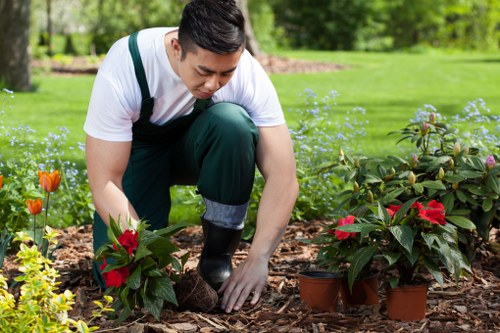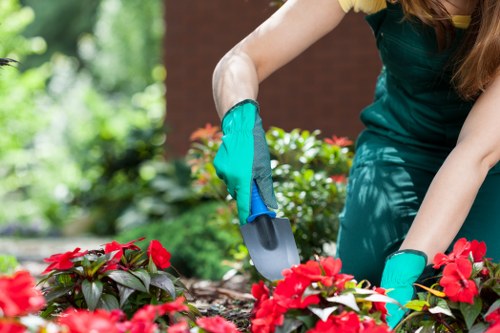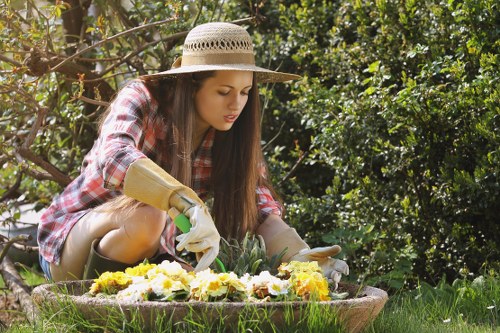Gardener Hook: Essential Tools for Every Green Thumb

Gardening is a fulfilling hobby that brings nature closer to our homes, allowing us to cultivate beauty and sustenance in our surroundings. Whether you're a seasoned gardener or just starting out, having the right tools is crucial for a successful gardening experience. One such indispensable tool is the Gardener Hook. This versatile accessory can transform your gardening routine, making tasks easier and more efficient.
The Gardener Hook serves multiple purposes in the garden. From hanging tools to supporting plants, its functionality is unmatched. Understanding the various types of gardener hooks and their applications can help you maximize their potential in your garden.
In this article, we'll delve deep into the world of gardener hooks, exploring their benefits, different types, installation methods, and maintenance tips. Additionally, we'll highlight some of the best practices to integrate gardener hooks into your gardening setup effectively.

What is a Gardener Hook?

A Gardener Hook is a specially designed hook used in gardening to organize tools, support plants, and manage garden space efficiently. Made from durable materials like stainless steel or galvanized iron, these hooks are built to withstand outdoor conditions, ensuring longevity and reliability.
Gardener hooks come in various shapes and sizes, each tailored for specific gardening needs. Whether you need to hang heavy tool bags, support climbing plants, or create an organized storage system, there's a gardener hook suited for the task.
Incorporating gardener hooks into your garden setup not only declutters your workspace but also enhances the aesthetic appeal of your garden. With their sleek designs and practical applications, they blend seamlessly into any garden environment.

Benefits of Using Gardener Hooks

Using Gardener Hooks offers numerous advantages that can significantly improve your gardening experience:
- Organization: Keep your tools neatly arranged and easily accessible.
- Space-Saving: Utilize vertical space to declutter your gardening area.
- Plant Support: Provide necessary support for climbing and sprawling plants.
- Durability: Made from materials that resist rust and wear.
- Versatility: Suitable for a wide range of gardening applications.
These benefits make gardener hooks a must-have for any gardening enthusiast looking to maintain an organized and efficient garden space.
Enhanced Garden Aesthetics
Beyond functionality, gardener hooks contribute to the overall look of your garden. By keeping tools and plants neatly arranged, they help maintain a tidy and visually appealing environment. Select hooks that match your garden's theme for a cohesive appearance.
Improved Efficiency
With tools and plants well-organized, you can work more efficiently. No more searching for misplaced tools or dealing with tangled plant supports. Gardener hooks streamline your gardening tasks, saving you time and effort.

Types of Gardener Hooks
There are several types of gardener hooks available, each designed for specific purposes. Understanding the differences between them can help you choose the right hook for your needs.
- Wall-Mounted Hooks: Ideal for hanging tools and pots on garden walls or fences.
- Ceiling Hooks: Perfect for suspending baskets and overhead plants.
- Plant Support Hooks: Designed to support climbing plants like vines and roses.
- Heavy-Duty Hooks: Suitable for holding larger tools and equipment.
- Adjustable Hooks: Provide flexibility in how and where you hang items.
Choosing the right type of gardener hook depends on the specific needs of your garden and the items you intend to hang or support.
Wall-Mounted Hooks
Wall-mounted hooks are versatile and can be installed on various surfaces around your garden. They are perfect for organizing smaller tools, pots, and decorative items, keeping them within easy reach.
Plant Support Hooks
Plant support hooks are essential for gardeners who cultivate climbing plants. These hooks help guide plants as they grow, ensuring they receive adequate support and space to thrive.

Installing Gardener Hooks
Proper installation of Gardener Hooks is crucial to ensure they function correctly and last for years. Here are some steps to guide you through the installation process:
- Choose the Right Location: Select a spot that offers easy access and suits the purpose of the hook.
- Prepare the Surface: Ensure the wall, fence, or ceiling is clean and free from debris.
- Mark the Spot: Use a pencil to mark where the hook will be placed.
- Drill Pilot Holes: Depending on the surface, drill holes to provide a secure anchor for screws.
- Attach the Hook: Secure the hook using appropriate screws or anchors, ensuring it's firmly in place.
- Test Stability: Before hanging items, gently tug the hook to ensure it's securely installed.
Choosing the Right Tools
Having the right tools makes the installation process smoother. Common tools needed include a drill, screwdriver, level, measuring tape, and appropriate fasteners based on the mounting surface.
Safety Precautions
Always prioritize safety during installation. Wear protective gear, ensure tools are in good condition, and follow manufacturer guidelines to prevent accidents.

Maintenance Tips for Gardener Hooks
To ensure the longevity and effectiveness of your Gardener Hooks, regular maintenance is essential. Follow these tips to keep your hooks in top condition:
- Regular Cleaning: Remove dirt and debris that can accumulate on hooks. Use a damp cloth and mild detergent for cleaning.
- Inspect for Wear and Tear: Periodically check hooks for signs of rust, corrosion, or damage. Replace any compromised hooks immediately.
- Lubricate Moving Parts: If your hooks have moving parts, apply lubricant to ensure smooth operation.
- Secure Loose Screws: Tighten any loose screws or fasteners to maintain the stability of the hook.
- Protect from the Elements: Apply protective coatings or paint to metal hooks to prevent rusting and corrosion.
Proper maintenance not only extends the life of your gardener hooks but also ensures they continue to perform their intended functions effectively.
Seasonal Maintenance
Different seasons can affect the condition of your hooks. In colder months, protect hooks from frost and ice, while in warmer months, ensure they are free from excessive moisture and heat damage.
Storage Tips
If you need to store your gardener hooks temporarily, keep them in a dry and sheltered place to prevent damage from moisture and harsh weather conditions.

Integrating Gardener Hooks into Your Garden
Integrating Gardener Hooks into your garden layout can enhance both functionality and aesthetics. Here are some creative ways to incorporate hooks into your gardening space:
- Tool Organization: Hang frequently used tools like trowels, pruners, and gloves for easy access.
- Hanging Planters: Use ceiling or wall-mounted hooks to suspend hanging baskets and planters.
- Plant Trellises: Support climbing plants by attaching hooks to trellises or fences.
- Decorative Accents: Add decorative elements like garden lights or ornaments using stylish hooks.
- Storage Solutions: Create an organized storage system for hoses, ropes, and other gardening accessories.
By thoughtfully placing hooks around your garden, you can create a harmonious and efficient gardening environment.
Maximizing Vertical Space
Gardener hooks are excellent for utilizing vertical space, which is often underused in gardens. By hanging tools and plants vertically, you free up ground space and create a more spacious feel.
Enhancing Accessibility
Strategically placed hooks ensure that essential tools and plants are within reach, reducing the need to constantly move around the garden and improving overall accessibility.

Choosing the Right Material for Gardener Hooks
The material of your Gardener Hooks plays a significant role in their durability and suitability for outdoor use. Common materials include:
- Stainless Steel: Resistant to rust and corrosion, ideal for humid and wet environments.
- Galvanized Iron: Coated with zinc to prevent rust, offering durability at a lower cost.
- Plastic: Lightweight and resistant to moisture, suitable for lighter applications.
- Brass: Offers a decorative finish, though less resistant to harsh weather conditions.
- Aluminum: Lightweight and resistant to corrosion, perfect for various garden setups.
Choose a material that aligns with your garden's climate and the specific applications you have in mind for the hooks.
Corrosion Resistance
Opt for materials that can withstand your local climate. For gardens exposed to rain and humidity, stainless steel or galvanized iron hooks are preferable due to their corrosion-resistant properties.
Aesthetic Considerations
Consider the visual appeal of the hooks in your garden. Decorative materials like brass can add a touch of elegance, while more utilitarian materials like aluminum focus on functionality.

Innovative Uses for Gardener Hooks
Beyond their traditional applications, Gardener Hooks can be used in innovative ways to enhance your gardening experience:
- Hanging Herb Gardens: Create a vertical herb garden by hanging multiple pots from sturdy hooks.
- Tool Shadow Boards: Organize tools in a shadow board layout, making each tool easily identifiable.
- Outdoor Lighting: Hang solar-powered lights to illuminate your garden pathways.
- Decorative Fencing: Enhance fence aesthetics by adding decorative hooks for hanging plants and ornaments.
- Bird Feeders: Hang bird feeders using hooks to attract wildlife to your garden.
These creative applications can add both functionality and charm to your garden space.
Creating a Vertical Herb Garden
Utilize gardener hooks to hang small pots filled with herbs. This setup not only saves space but also makes it easy to access fresh herbs for cooking.
Enhancing Garden Decor
Incorporate decorative hooks into your garden design to hang ornaments, lights, or seasonal decorations, adding personality to your outdoor space.

Local Relevance: Gardener Hooks in Hook and Surrounding Areas
If you reside in Hook or its nearby areas, integrating Gardener Hooks into your gardening practices can enhance your local gardening community. Here are some of the closest areas to Hook where gardener hooks can make a difference:
- Fleet: Just a few miles from Hook, Fleet offers expansive gardens where hooks can help manage tools and plants efficiently.
- Chichester: Known for its beautiful gardens and historic estates, Chichester gardeners can benefit from organized gardening setups using hooks.
- Yateley: With its diverse flora, Yateley is an ideal place to use gardener hooks for supporting a variety of plants.
- Woking: Urban gardeners in Woking can utilize hooks to maximize limited space and keep tools organized.
- Staines-upon-Thames: This area’s lush gardens can be enhanced with clever use of hooks for plant support and tool storage.
- Virginia Water: Famous for its stunning vistas, adding hooks can help maintain the beauty and order of gardens here.
- Byfleet: As a residential area, Byfleet gardeners can benefit from hooks to keep their gardens tidy and efficient.
- Camberley: Active gardening communities in Camberley can adopt hooks for better garden management.
- Godalming: With its rich gardening traditions, Godalming is a perfect place to introduce innovative gardener hooks.
- Weybridge: Weybridge’s elegant gardens can be further beautified and organized with the use of stylish hooks.
Each of these areas offers unique gardening opportunities, and incorporating gardener hooks can help gardeners maintain beautiful and organized spaces.
Fleet Gardens
Fleet’s expansive gardens provide ample space for gardeners to experiment with different hook placements, ensuring tools and plants are well-organized.
Chichester Estates
In historic estates like those in Chichester, gardener hooks can help manage large plantings and ornate tool collections with ease.
Choosing the Right Gardener Hook for Your Garden
Selecting the appropriate Gardener Hook depends on several factors, including the type of plants, available space, and specific gardening needs. Here are some guidelines to help you make the best choice:
- Assess Your Needs: Determine what you will be using the hooks for—tool storage, plant support, hanging baskets, etc.
- Consider the Environment: Choose hooks made from materials that can withstand local weather conditions.
- Evaluate Space: Measure the available space to ensure the hooks fit without overcrowding.
- Match Aesthetics: Select hooks that complement your garden’s design and color scheme.
- Check Weight Capacity: Ensure the hooks can support the weight of the items you intend to hang or hold.
By carefully considering these factors, you can select gardener hooks that not only meet your practical needs but also enhance the beauty of your garden.
Tool-Specific Hooks
If you need to hang heavy tools like shovels and rakes, opt for heavy-duty hooks with high weight capacity. For lighter items, decorative hooks can suffice.
Space Optimization
In smaller gardens, using adjustable and multi-purpose hooks can help maximize space usage, ensuring every inch is effectively utilized.

Conclusion
The Gardener Hook is a simple yet powerful tool that can revolutionize your gardening experience. From organizing tools to supporting plants, its versatility makes it an essential addition to any garden. By selecting the right hooks, installing them correctly, and maintaining them properly, you can enjoy a more efficient and aesthetically pleasing garden space.
Whether you're gardening in Hook or one of its nearby areas, incorporating gardener hooks into your routine can enhance both the functionality and beauty of your outdoor space. Embrace the benefits of gardener hooks and take your gardening endeavors to the next level.
Frequently Asked Questions
1. What materials are best for outdoor gardener hooks?
Stainless steel and galvanized iron are ideal for outdoor gardener hooks due to their resistance to rust and corrosion. These materials ensure durability and longevity, even in harsh weather conditions.
2. How do I install gardener hooks in a brick wall?
For brick walls, use masonry screws or anchors. Drill pilot holes into the brick, insert the anchors, and then screw the hooks securely. Ensure that the hooks are level and firmly attached to support the intended weight.
3. Can gardener hooks be used for hanging plants indoors?
Yes, gardener hooks can be used indoors to hang plants, pots, or decorative items. Choose hooks that match your indoor decor and ensure they are installed securely to handle the weight of the plants.
4. How can I prevent my gardener hooks from rusting?
To prevent rusting, choose hooks made from stainless steel or galvanized iron. Additionally, you can apply protective coatings or paints to other materials to enhance their resistance to moisture and corrosion.
5. Are there adjustable gardener hooks available?
Yes, adjustable gardener hooks are available and offer flexibility in how and where you hang items. These hooks can be repositioned easily, allowing you to customize your garden setup as needed.

